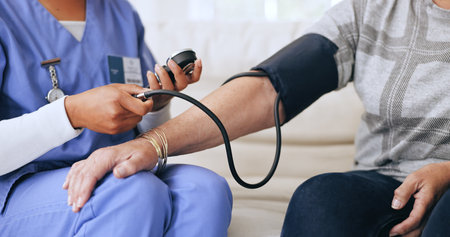1. Introduction to Hand Therapy Assessment
Hand therapy is a specialized area within occupational therapy focused on the rehabilitation of conditions affecting the hands and upper extremities. In the United States, occupational therapists (OTs) play a crucial role in helping individuals regain function, independence, and quality of life after injuries, surgeries, or illnesses involving the hand, wrist, or forearm.
The Role of Occupational Therapists in Hand Therapy
Occupational therapists use their expertise to assess and treat a wide range of hand-related issues, such as fractures, tendon injuries, nerve damage, arthritis, carpal tunnel syndrome, and post-surgical recovery. Their approach goes beyond just physical healing—they also address how these conditions impact daily activities like dressing, eating, writing, or working.
Key Responsibilities of OTs in Hand Therapy
| Responsibility | Description |
|---|---|
| Assessment | Identify strengths and limitations in hand function through various tests and observations. |
| Treatment Planning | Create personalized intervention plans based on assessment findings. |
| Education | Teach patients about injury prevention, self-management strategies, and proper techniques for daily activities. |
| Collaboration | Work closely with doctors, surgeons, physical therapists, and other healthcare professionals for holistic care. |
The Importance of Comprehensive Assessment in American Healthcare
A thorough assessment is the foundation of effective hand therapy. In the American healthcare system, insurance companies and referring physicians often require detailed evaluations to justify treatment plans and monitor progress. Comprehensive assessments help OTs:
- Determine baseline levels of function
- Set measurable goals that align with patient needs and insurance requirements
- Track progress over time using standardized tools recognized across U.S. healthcare settings
- Ensure interventions are evidence-based and client-centered
Main Elements of a Comprehensive Hand Therapy Assessment
| Element | Purpose | Common Tools/Methods Used in the U.S. |
|---|---|---|
| Range of Motion (ROM) | Measure flexibility and movement at each joint in the hand and wrist. | Goniometer measurements; visual observation |
| Strength Testing | Assess grip and pinch strength to determine muscle function. | Dynamometer; pinch gauge |
| Sensation Testing | Evaluate nerve function and detect sensory loss or changes. | Seman-Weinstein monofilaments; two-point discrimination test |
| Pain Assessment | Monitor pain levels to guide treatment choices. | Pain scales (e.g., Numeric Rating Scale) |
| Functional Assessment | Analyze how hand limitations affect daily tasks. | DASH (Disabilities of Arm, Shoulder, and Hand) questionnaire; observation during simulated tasks |
| Edema Measurement | Track swelling that may limit movement or cause discomfort. | Circumference measurement; volumetry (water displacement method) |
| Wound/Scar Assessment | Check healing status after surgery or injury. | Visual inspection; photography for documentation |
Summary Table: Common Assessment Areas in U.S. Hand Therapy Practice
| Assessment Focus | |
|---|---|
| Motions & Strength | ROM testing, grip & pinch strength |
| Sensory Function | Nerve function tests |
| Pain & Swelling | Pain rating scales, edema measurement |
| Daily Function | DASH questionnaire, activity simulation |
This systematic approach enables occupational therapists to provide high-quality care tailored to each individual’s unique needs within the context of American healthcare standards.
2. Patient History and Occupational Profile
Gathering Relevant Patient Information
When beginning hand therapy assessment, it’s essential for occupational therapists in the U.S. to gather comprehensive background information. This not only helps to identify the cause of injury or dysfunction but also guides the treatment plan. Therapists typically ask about:
- Medical history (previous surgeries, chronic illnesses, current medications)
- Details of the current hand condition (onset, symptoms, pain level, limitations)
- Work and daily routines (job type, physical demands, repetitive tasks)
- Previous therapy experiences
Exploring Meaningful Occupations
Understanding what activities are most meaningful to the client is a key part of occupational therapy. In the U.S., this might include roles at work, caregiving responsibilities at home, participation in sports or hobbies, and community involvement. Asking targeted questions can help identify priorities for rehabilitation.
| Occupation Area | Sample Questions |
|---|---|
| Work | What are your typical work tasks? Are there any tools or equipment you need to use? |
| Home | Do you have responsibilities like cooking, cleaning, or caring for family members? |
| Leisure | What hobbies or activities do you enjoy in your free time? |
| Community | Are you involved in any volunteer work or community organizations? |
Understanding Cultural and Social Backgrounds in the U.S.
The cultural and social context of each client shapes their goals and expectations. In the diverse American landscape, therapists should recognize differences in family structure, work culture, living situations, and health beliefs. Open-ended questions about lifestyle and values help build a strong therapeutic relationship and ensure that interventions are tailored for real-life success.

3. Standardized Assessment Tools
In the field of hand therapy, occupational therapists rely on several standardized assessment tools to evaluate hand function and guide treatment planning. Using validated instruments helps ensure consistency and accuracy in measuring a client’s progress. Below are some of the most commonly used hand function assessments in U.S. clinical practice.
DASH (Disabilities of the Arm, Shoulder, and Hand)
The DASH is a self-reported questionnaire that asks clients about their symptoms and ability to perform daily activities involving the arm, shoulder, and hand. It provides valuable insight into the functional impact of upper extremity conditions from the client’s perspective.
Key Features of DASH
- 30 items covering physical function and symptoms
- Quick to administer (usually takes about 10–15 minutes)
- Widely used for a variety of upper limb diagnoses
- Scores help track changes over time
Purdue Pegboard Test
The Purdue Pegboard test evaluates fine motor skills and dexterity by requiring clients to place small pegs into holes as quickly as possible. It is often used with clients recovering from nerve injuries or surgeries affecting finger coordination.
Key Features of Purdue Pegboard
- Measures both gross movements of hands, fingers, and arms, as well as fingertip dexterity
- Timed test (usually 30 seconds per trial)
- Assesses performance with the right hand, left hand, both hands, and assembly tasks
- Useful for monitoring improvement during rehabilitation
Other Commonly Used Assessments
| Assessment Tool | Main Purpose | Typical Use in Hand Therapy |
|---|---|---|
| Jebsen-Taylor Hand Function Test (JTHFT) | Evaluates a range of everyday hand functions such as writing, feeding, and picking up objects | Tracks functional gains across multiple activities relevant to daily life |
| Box and Block Test | Measures gross manual dexterity by counting how many blocks can be moved from one compartment to another within 60 seconds | Commonly used after stroke or traumatic injuries to assess unilateral hand use |
| Grip Strength Dynamometry | Assesses grip strength using a handheld device (dynamometer) | Monitors recovery after tendon repairs or fractures; compares affected and unaffected hands |
| Pain Scales (e.g., Visual Analog Scale) | Measures perceived pain intensity during movement or activity | Helps guide activity modification and pain management strategies |
Cultural Relevance in U.S. Practice
All these tools are widely recognized in American clinical settings due to their reliability, ease of use, and alignment with insurance documentation requirements. They provide objective data that supports communication with physicians, clients, and insurance providers.
Choosing the Right Assessment Tool
The selection depends on the client’s diagnosis, treatment goals, and the specific aspects of hand function being evaluated. Occupational therapists often combine multiple assessments for a comprehensive evaluation tailored to each individual’s needs.
4. Physical Examination and Functional Testing
Guidelines for Range of Motion (ROM) Evaluation
Measuring range of motion is a key part of hand therapy assessment. Occupational therapists in the U.S. commonly use goniometers to check joint mobility in fingers, thumb, and wrist. It’s important to compare the affected side with the unaffected side for accuracy. ROM testing should be done both actively (patient moves by themselves) and passively (therapist moves the joint).
| Joint | Normal ROM (degrees) | Key Points |
|---|---|---|
| MCP Flexion | 0-90 | Bend at knuckle |
| PIP Flexion | 0-100 | Bend at middle finger joint |
| DIP Flexion | 0-70 | Bend at fingertip joint |
| Wrist Flexion/Extension | 0-80 / 0-70 | Bend wrist up/down |
| Thumb Opposition | N/A | Touch thumb to pinky tip/base |
Strength Assessment Techniques
Hand strength is usually measured using dynamometers and pinch gauges. These tools help occupational therapists assess grip and pinch strength, which are important for daily activities like opening jars or holding utensils.
| Test Type | Tool Used | Description |
|---|---|---|
| Grip Strength | Dynamometer (e.g., Jamar) | Squeeze tool as hard as possible, record in pounds or kilograms. |
| Lateral Pinch Strength | Pinch Gauge | Pincer grip between thumb and side of index finger. |
| Three-Jaw Chuck Pinch | Pinch Gauge | Pulp-to-pulp pinch using thumb, index, and middle finger. |
| Tip Pinch Strength | Pinch Gauge | Pincer grip between thumb and tip of index finger. |
Sensation Evaluation Methods
Sensation testing helps detect nerve injury or recovery. In American hand therapy clinics, two-point discrimination and Semmes-Weinstein monofilaments are standard tools. Sensation is compared bilaterally to identify deficits.
- Two-Point Discrimination: Measures minimum distance between two points felt as separate on skin (normal: <5mm on fingertips).
- Semmes-Weinstein Monofilaments: Assess light touch; different thicknesses indicate varying degrees of sensitivity loss.
- Tinel’s Sign: Tapping over nerve to check for tingling—often used in carpal tunnel screening.
- Stereognosis: Patient identifies common U.S. objects (coin, key, paperclip) placed in their hand without looking.
Edema Evaluation Guidelines
Edema, or swelling, is measured with a tape measure or volumeter. Circumference measurements are taken at specific points—commonly at the wrist crease, MCP joints, and PIP joints. Volumetric measurement uses water displacement for more detailed tracking in some U.S. clinics.
| Location Measured | Tape Measurement Reference Point (cm) |
|---|---|
| Dorsal Hand (MCPs) | Around knuckles at MCPs (0 cm from base) |
| PIP Joint (Finger) | Around middle joint of affected finger (~2-3 cm from MCP) |
Functional Tests Based on U.S. Daily Living Activities
The goal of hand therapy is to return patients to meaningful daily activities. Occupational therapists use functional tests that mimic tasks typical in American households and workplaces:
- Picking up coins (fine motor coordination)
- Opening jars or bottles (grip strength, coordination)
- Zipping/unzipping jackets or backpacks (dexterity)
- Turning door knobs (wrist rotation/strength)
- Tying shoelaces (fine motor skills, bilateral coordination)
- Cutting food with knife/fork (grip strength, control)
- Writing with a pen or pencil (precision grip, endurance)
- Lifting grocery bags (gross grasp strength)
- Using a smartphone or tablet (precision touch)
Summary Table: Common Physical & Functional Evaluations in Hand Therapy
| Assessment Type | Tools/Methods Used | Example Daily Tasks |
|---|---|---|
| Range of Motion | Goniometer | Reaching for objects |
| Strength | Dynamometer, Pinch Gauge | Opening jars, carrying groceries |
| Sensation | Monofilaments, Two-point discrimination | Buttoning shirts, handling coins |
| Edema | Tape measure, Volumeter | Detecting swelling after activity |
| Functional Tests | Simulated ADL tasks | Writing, using utensils, typing |
These techniques ensure comprehensive evaluation tailored to each patient’s needs while addressing common daily living challenges faced in the United States.
5. Interpreting Results and Collaborative Goal Setting
Strategies for Integrating Assessment Results
Once you have gathered assessment data in hand therapy, the next step is to make sense of the results. This means looking at both quantitative measures (like grip strength or range of motion) and qualitative observations (such as pain level or task performance). Integrating these findings helps you see the full picture of your client’s hand function and daily challenges.
| Assessment Type | How to Interpret | How to Use in Planning |
|---|---|---|
| Grip Strength Test | Compare scores with age/sex norms | Set realistic improvement targets |
| Sensory Testing | Identify areas of decreased sensation | Choose sensory retraining strategies |
| Pain Rating Scales | Monitor changes over time | Adjust interventions as needed |
| Functional Task Observation | Note difficulties in real-life tasks | Select priority activities for rehab |
Communicating Findings with Clients and Healthcare Teams
Sharing results effectively is crucial. When discussing findings with clients, use plain language and visual aids if possible. For example, “Your grip strength is a bit lower than average for your age, but we can work together to improve it.” With healthcare teams, use standardized reports and clear documentation so everyone stays on the same page.
Tips for Effective Communication:
- Be honest but encouraging: Focus on strengths as well as areas for growth.
- Use culturally relevant examples: Relate findings to the client’s daily life and values.
- Create a summary sheet: Provide a simple handout highlighting key results.
- Encourage questions: Invite clients and team members to clarify anything that’s unclear.
Developing Culturally Relevant, Client-Centered Treatment Goals
Cultural sensitivity matters when setting goals in occupational therapy. Make sure goals respect your client’s background, preferences, and priorities. In American settings, this often means involving clients directly in goal-setting conversations and making sure goals are functional, measurable, and meaningful to them.
| Cultural Consideration | Example of Client-Centered Goal Setting |
|---|---|
| Work/Lifestyle Needs | “Return to work at construction site with ability to lift tools safely.” |
| Family Roles | “Able to prepare family meals independently using adaptive utensils.” |
| Cultural Activities | “Resume playing guitar in church band without pain.” |
| Personal Values/Beliefs | “Perform self-care tasks while respecting modesty preferences.” |
S.M.A.R.T. Goal Example:
- Specific: Improve right hand grip strength by 10 lbs.
- Measurable: Use dynamometer readings every week.
- Attainable: Based on initial assessment data.
- Relevant: Supports clients return to work needs.
- Time-based: Achieve within six weeks.
The Bottom Line on Collaborative Goal Setting:
The key is to blend clinical knowledge with what matters most to your client. Listen actively, involve family or caregivers when needed, and revisit goals regularly as progress happens. Collaboration leads to better outcomes—and happier clients!


